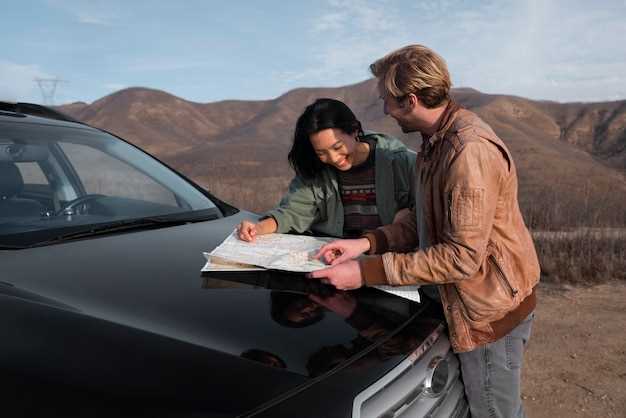
Embarking on a long road trip can be an exhilarating experience, offering a chance to explore new landscapes and create unforgettable memories. However, ensuring that your Toyota is prepared for the journey is essential for a smooth and enjoyable adventure. Proper maintenance not only enhances your vehicle’s performance but also safeguards your safety and comfort on the road.
Before hitting the open road, it’s important to conduct a thorough check of your Toyota. Common maintenance tasks, such as inspecting the oil level, checking tire pressure, and ensuring the brakes are functioning optimally, can make a significant difference in your road trip experience. Neglecting these aspects may lead to potential issues during your trip, causing delays and unwanted stress.
In this guide, we will outline the key steps to prepare your Toyota for a long road trip. From routine inspections to packing essentials, we aim to help you cover all the bases, ensuring that your trip is both enjoyable and worry-free.
Conducting a Comprehensive Vehicle Inspection
Before embarking on a long road trip, performing a comprehensive vehicle inspection is essential to ensure a smooth and safe journey. This maintenance check should cover several critical areas of your Toyota to mitigate the risk of breakdowns on the road.
Start with the engine. Check oil levels and ensure the oil is clean; fresh oil promotes better engine performance. Inspect the coolant level and look for any leaks around hoses or the radiator. A properly functioning cooling system is vital for avoiding overheating during your trip.
Next, examine the tires. Verify that all tires, including the spare, have adequate tread depth and are properly inflated. Uneven tire wear can indicate alignment issues, which should be addressed before hitting the road. Additionally, check for any visible damage or bulges that could lead to a flat tire on your journey.
Brakes are another critical component. Test the brake pads for wear and ensure they are not too thin. Listen for any unusual noises when applying brakes, as these can signal the need for immediate maintenance. Ensure that brake fluid levels are sufficient to promote efficient braking performance.
Next, inspect the battery. Look for corrosion on battery terminals and ensure that the connections are secure. A weak or failing battery can lead to unexpected troubles, especially when starting your car after long stops during your trip.
Don’t overlook the lights and signals. Test all headlights, taillights, turn signals, and brake lights to ensure they function correctly. Good visibility and clear communication with other drivers are crucial for road safety.
Lastly, ensure that your windshield wipers are in good condition and that the washer fluid reservoir is full. Visibility is key during inclement weather, so having functional wipers can prevent dangerous situations on the road.
Conducting this comprehensive vehicle inspection not only enhances your safety but also contributes to a more enjoyable trip. Adequate maintenance before your adventure ensures that you can focus on the journey ahead rather than potential road issues.
Checking and Replacing Essential Fluids

Before embarking on a long road trip in your Toyota, it is crucial to ensure all essential fluids are in optimal condition. Proper maintenance of these fluids not only enhances vehicle performance but also contributes to safety on the road.
Engine Oil is vital for the lubrication of engine components. Check the oil level using the dipstick, and ensure it is clean and at the appropriate level. If the oil appears dark or gritty, it’s time for a change. Refer to your owner’s manual for the recommended oil type and change intervals.
Coolant plays a critical role in regulating engine temperature. Inspect the coolant reservoir to ensure it is filled to the appropriate level. If the coolant is rusty or has debris, it’s advisable to flush the system before your trip to prevent overheating.
Brake Fluid is essential for safe stopping. Check the brake fluid level in the master cylinder reservoir. If it is low, top it off with the recommended type. If the fluid appears discolored, consider replacing it to maintain effective braking performance.
Transmission Fluid helps ensure smooth gear shifts. Check the transmission fluid level and quality by removing the dipstick. If the fluid smells burnt or has a dark color, a replacement is necessary to avoid transmission issues during your trip.
Power Steering Fluid is often overlooked but is important for steering efficiency. Inspect the power steering fluid reservoir to confirm it’s at the correct level. Low fluid can lead to hard steering and increased wear on the system.
Windshield Washer Fluid is essential for visibility. Ensure the reservoir is filled with a suitable washer fluid to keep your windshield clean during long drives. This safety precaution can make a significant difference when facing adverse weather conditions.
Taking the time to check and replace these essential fluids before your trip will ensure your Toyota runs smoothly and safely throughout your journey. Regular maintenance is key to preventing breakdowns and enhancing the overall driving experience.
Planning for Tire Maintenance and Emergency Supplies

Before embarking on a long road trip with your Toyota, proper tire maintenance is crucial. Begin by checking the tire pressure, ensuring it meets the manufacturer’s recommended levels. Under-inflated tires can decrease fuel efficiency and increase the risk of a blowout, especially on long journeys. It’s advisable to inspect the tread depth as well; use the penny test or a tread depth gauge to ensure adequate traction for various road conditions.
Next, examine your tires for any signs of wear, such as cracks or bulges. If any significant damage is detected, consider replacing the tires before your trip. Additionally, rotating your tires regularly can promote even wear, extending their lifespan and enhancing safety while driving.
In addition to tire maintenance, preparing a comprehensive set of emergency supplies is essential for a smooth trip. Include a spare tire, jack, and lug wrench in your emergency kit, as these tools will empower you to address flat tires on the road. Furthermore, having a portable air compressor can be beneficial for re-inflating tires as needed.
Beyond tire-related tools, your emergency supplies should encompass basic necessities. Consider adding first aid kits, flashlight, water, non-perishable snacks, and a blanket. Roadside flares or reflective triangles can also increase visibility and safety in case of vehicle malfunctions or accidents.
By ensuring your tires are in peak condition and packing essential emergency supplies, you enhance your overall preparedness for the trip, allowing you to enjoy the journey without unnecessary worries.
